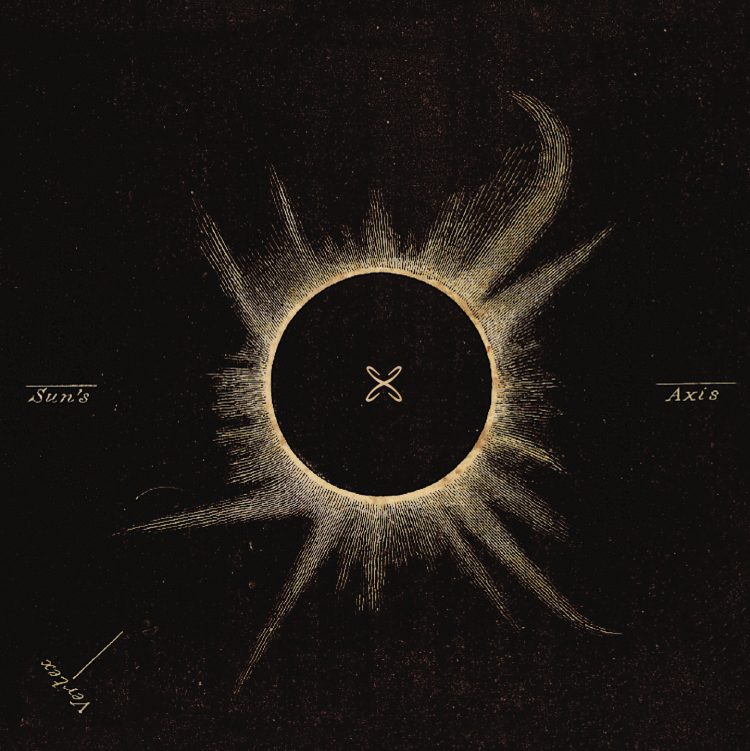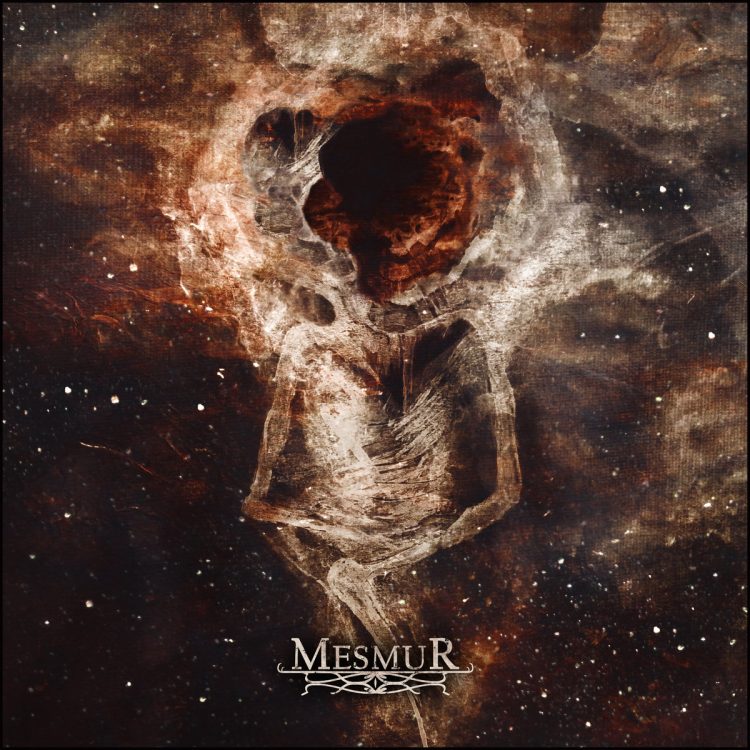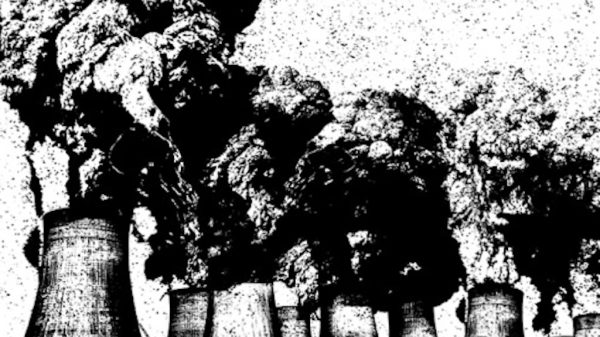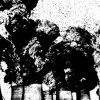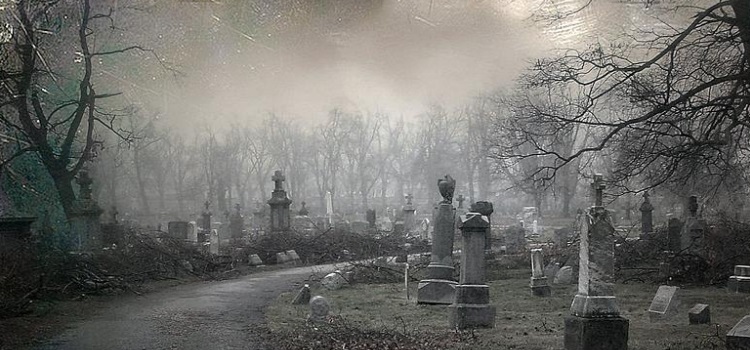After an excellent first album, here is the latest release from the international Funeral Doom band Mesmur. S is an amazing four songs album, that will take you and bring you into their world. They have clearly been influenced by space and physics. The music is deep and heavy, the guitar brings melodies that blend into heavy distortions, and they bring some elements of black metal with the tremolo riffs. They did a great job with their latest album. Here’s an interview with Jeremy L. (Guitar/Synth/Song writer), who tells us about his inspirations, everything you want to know about S and what’s to come in the future for Mesmur.
Have you been working on the songs for a long time or there was a moment that you decided to make the songs for S?
Jeremy: We’ve written a good deal of music for Mesmur in the past two years. After a while, the new material began to diverge into two groups mainly based on subject matter, and we realized we were working on two different records. We decided to focus our attention first on developing the space-themed material, which is what became S. At first, we thought we were working with an EP, or half of a split release, but the concept kept growing and we realized it was meant to be a full length album.
Was there a source of inspiration for the songs?
Jeremy: Most of my inspiration for the lyrics and concepts of S came from watching films and documentaries, and reading articles about astronomy and physics. Musically, doom bands like Evoken, Mar de Grises, Esoteric, and Ea have been major inspirations to me, but outside the extreme doom genre, Univers Zero, King Crimson, Neurosis, Rush, The Mars Volta, and maybe most recently the German band Eloy, have all on some level been Mesmur influences – whether we’re talking about melody, compositional structure, use of ambient sound, or lyrical imagery. I’ve never been content working completely within the strict confines of a genre, simply following in the footsteps of other artists I admire. Mesmur is clearly death/funeral doom metal at heart, but many of the components are inspired by other types of music.
Is the picture for the album cover a source of inspiration or that came after?
Jeremy: The album art came after the songs were mostly finished (all but the closing instrumental, I believe). Cadaversky has done a number of abstract space-themed paintings, and we knew when we first came across his work that it could work very well for the album. I talked with him about a vague idea I had of an anthropomorphic representation of cosmic destruction, and he immediately had the vision and knew how to make it work. I could not have been happier with the way his painting came out, and how well it represents the music and lyrics.
How do you compare S to your previous self-titled album?
Jeremy: The most obvious difference from the first Mesmur album is the more “cosmic” subject matter and atmosphere. Compared to the self-titled, I think the feel of S is less depressive and more foreboding. In a way, it’s musically a continuation of what we were developing with the debut, but I think the end result on S is more cohesive and focused. The songs on the new record don’t all sound the same by any means, but there’s a consistent atmosphere and tone holding the album together. Average song length is increased a bit, and I’d also say that in terms of developing and revisiting musical themes, the song structures and arrangements have grown in complexity. Noise and dissonance are elements that are closely intertwined with the subject matter of the album, and as such they also play a bigger role in S than they did on the debut. The result is a record that holds true to the foundation we built with the self-titled, but is also much bigger and more expansive.
“Singularity” is about elements evolving into something new. Is this a new place or an ideal that we are looking for?
Jeremy: Well on the surface, “Singularity” is obviously about a star dying and becoming a black hole, but you’re right, there’s a broader meaning there regarding change and evolution. Specifically, the idea of discarding or walking away from the “light” and from comfort, and becoming sovereign by embracing the chaotic and the unknown. This light could represent a religion, an unhealthy relationship, or just about anything you want to interpret it as.
“Exile” is the journey to a new world, seems that it is impossible to find a new world or a perfect place, what did you want to tell with this song?
Jeremy: I’m not so sure it’s that optimistic, to be honest. It’s a sort of fever dream journey across space, with the intent to “infect” another part of the universe with life. I don’t know if you’ve ever read about Panspermia, but it’s the theory that life on earth did not originate here on earth, but rather was brought here from somewhere else, either incidentally by a comet or meteorite, or deliberately by an intelligent something or someone. “Exile” is more or less a reflection on this idea.
“Distension” is about the dying sun that will eventually consume the system, is this for you the way the end will come?
Jeremy: You could look at “Distension” as being about the death of the sun, but it’s also about the destruction of the universe as a whole, the idea of an expanding and stretching universe slowly unravelling and tearing itself apart. Earth will be long gone when this happens, and life on earth will be long gone before the sun expands into a red giant and burns out, but it’s still an interesting question what happens after the destruction of the universe, and whether this would spell the end of all things, or possibly the birth of a new universe.
How does the Boltzmann entropy formula influence your music?
Jeremy: The concept of entropy, meaning the gradual breakdown of a system into disorder or chaos, is the main underlying theme of the whole record. Boltzmann was a 19th century Austrian physicist who developed a formula for calculating statistical entropy (the variable “S”), and we used this formula as the title of the instrumental final track of the album. “Singularity” explores the principal of entropy on a more personal level, while “Exile” and especially “Distension” look at the theme on a larger, more universal scale. It’s a powerful concept, and unequivocally Doom metal if you ask me.
Do you find poetry in physics?
Jeremy: Of course! If not, it wouldn’t be worth writing about. I find it fascinating that the same concept of entropy that applies on a cosmic scale to the behavior of galaxies is also relevant here on earth, whether you’re talking about the gradual collapse of nations, or the disintegration of human relationships. That to me is very poetic.
Do you have more songs or other projects coming up soon?
Jeremy: Like I mentioned earlier, S is only half of the new Mesmur material we’ve been working on over the past two years. A follow-up album is mostly written, and we’ll soon turn our focus to fine-tuning and completing it. It’s going to be pretty different from S, but I think you’ll enjoy it too.


